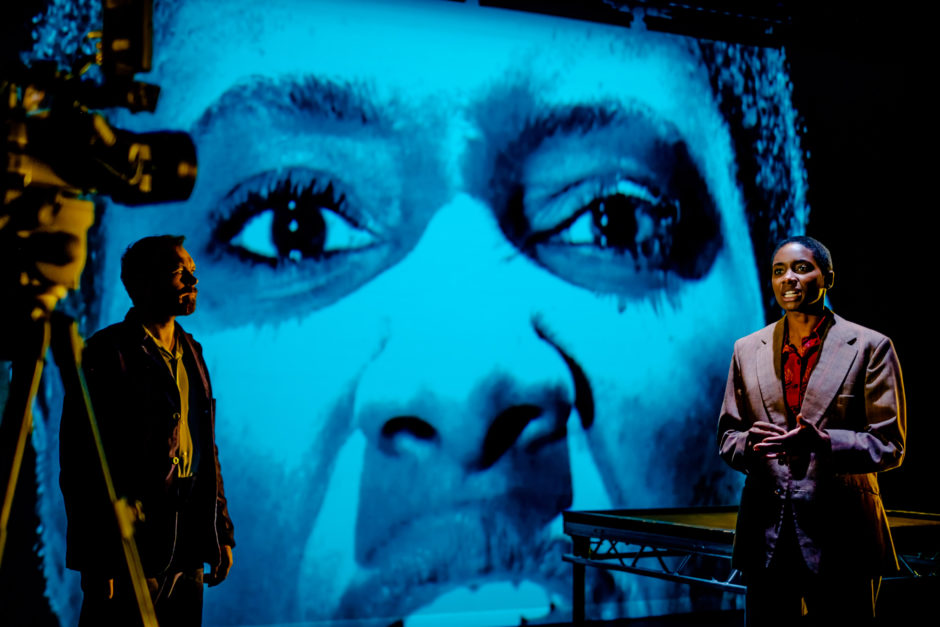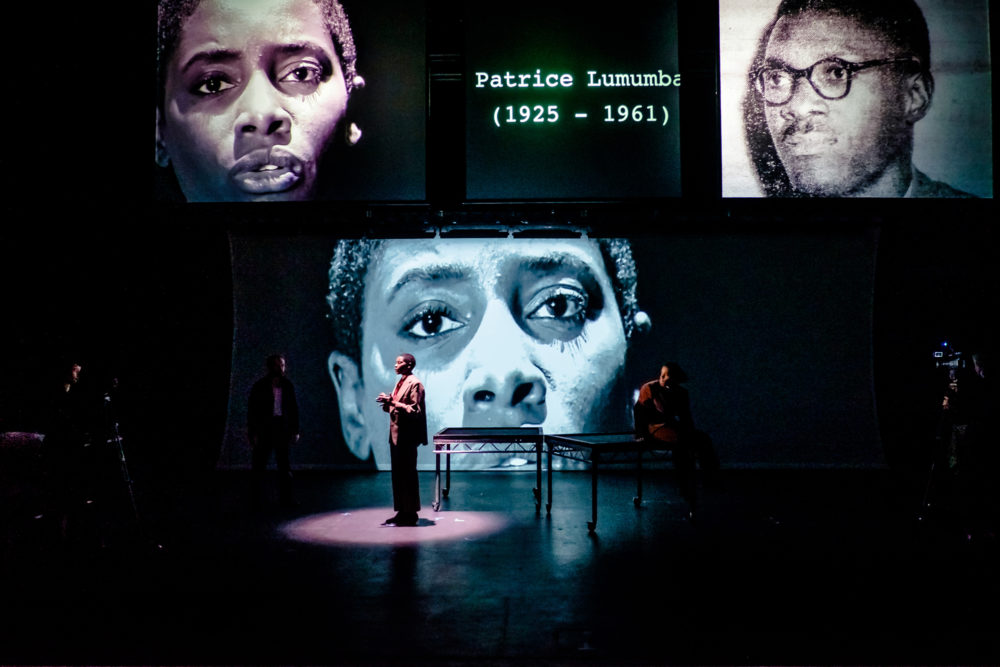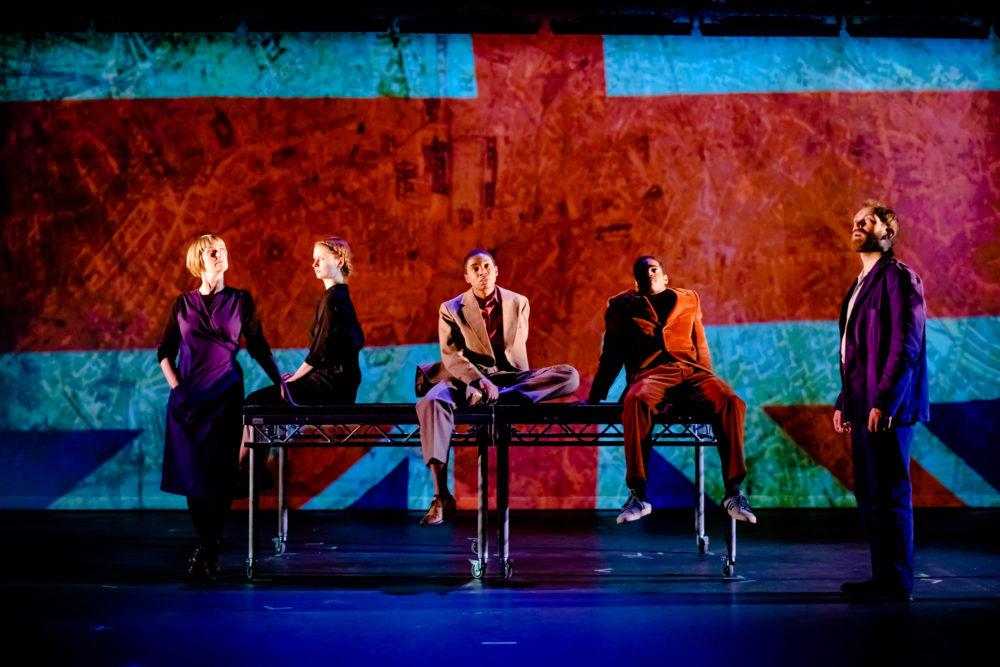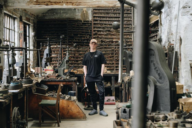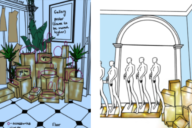HEART OF DARKNESS AT BELGRADE, COVENTRY
“Our journey into our heart of darkness” – imitating the dog’s artistic directors on bringing Conrad’s controversial novel to the stage.
Theatre innovators imitating the dog are taking on one of the most controversial and influential novels in English literature this spring with their current touring production of Joseph Conrad’s Heart of Darkness.
Recasting the protagonist, Charlie Marlow as a Congolese detective venturing into the dark heart of a war-torn Europe, this bold new staging fuses live performance with cutting-edge digital technology, unfolding the story “like an animated Cinemascope graphic novel”.
Ahead of the show’s arrival in at the Belgrade in Coventry from 8-11 May, imitating the dog’s artistic directors Andrew Quick and Simon Wainwright told us more about the process of bringing the story to the stage.
“It’s a very important and influential novel but there are real problems with it, especially in its representation of Africa and the people who inhabit what was then called the Belgian Congo,” says Quick. “This makes it a challenging novel, but one of the ways we have approached our adaptation is to make our own struggle with Conrad’s writing a crucial part of the staging.”
One of the ways in which this struggle manifests is through a framing narrative, in which a group of characters reflecting on the themes and ideas of the novel attempt to mount their own staging, shaking up the story to better reflect contemporary concerns.
“The problem of how to stage or ‘re-tell’ a book like Heart of Darkness which is considered now by many to be both outdated and un-presentable has always driven our process with both the text and the production design, trying to answer the question, ‘How do we tell this story now?’ The video, sound and set design (along with the text and performance) are the machine by which we negotiate these questions,” Wainwright explains.
“The actors create a live film on stage using cameras and green-screen backdrops which, when combined with backgrounds, overlays and images, creates a framed, graphic novel-style film,” he continues. “The video, in one way, becomes the resolution, and the live performance on stage shows our struggle to find this resolution.”
“[It’s] a kind of witty and condensed version of our actual process – our journey into our heart of darkness, if you like,” adds Quick.
Not only does this device enable them to unpack some of the story’s more troublesome elements – it also offers audiences a rare and fascinating insight into the development of the show.
“An important part of the project is also the representation of process, or our research and discussion… of the many hours spent watching films, reading books and sitting around a table to get to the heart of the story,” says Wainwright.
“The sound and video allow us to create a patchwork documentary, to reference the materials we have used to make the work.
This is often woven into a piece unnoticed by the audience – a layer which adds texture and value but is unspoken. We felt this time that the process was the piece. The struggle to make the work is what the piece is about.”
Some of the difficulty with staging Heart of Darkness is to do with the complexity of the original text – the density of its language, which is often richly descriptive, deeply symbolic and introspective. But of course, any reading of the novel today is also troubled by Conrad’s attitude to Africa and the people who live there, the novel having been written and published at the height of European imperialism.
“I think I can speak for the others when I say we like much of the novel but there are real problems with how it represents the victims of colonialism it describes. It does not give them any kind of voice,” says Quick.
“On the other hand, Conrad seems to predict much of the horror of the twentieth century and observes how Europeans tested out their version of devastating capitalism in the colonies before turning the lessons of its exploitation on themselves in Europe and indeed in all other parts of the world.”
The company’s response has been to relocate the action from the Congolese rainforest in the late 19th century to a bombed-out building on the outskirts of London. The scene is set just after the end of the Second World War, in a Europe still reeling from the horrors of two devastating conflicts.
“Looking at an earlier part of British and global history has been a new development for us,” says Quick. “We are taking some of the historical context from the original but re-imagining from our particular point of view.
“We take Conrad’s story of the river journey and reset it as a road journey across a devastated Europe. Our Marlow is not a sailor but a private detective from Kinshasa and she’s a black woman, not a man. So we are reversing or creating a parallel version based on Conrad’s original. We keep some of the plot and tone, but it is a radical reimagining.”

